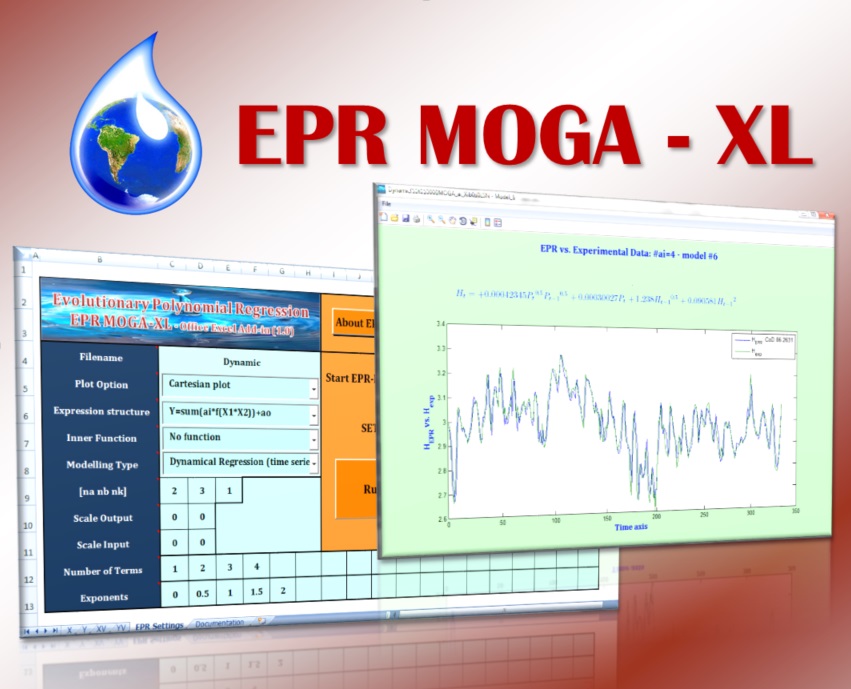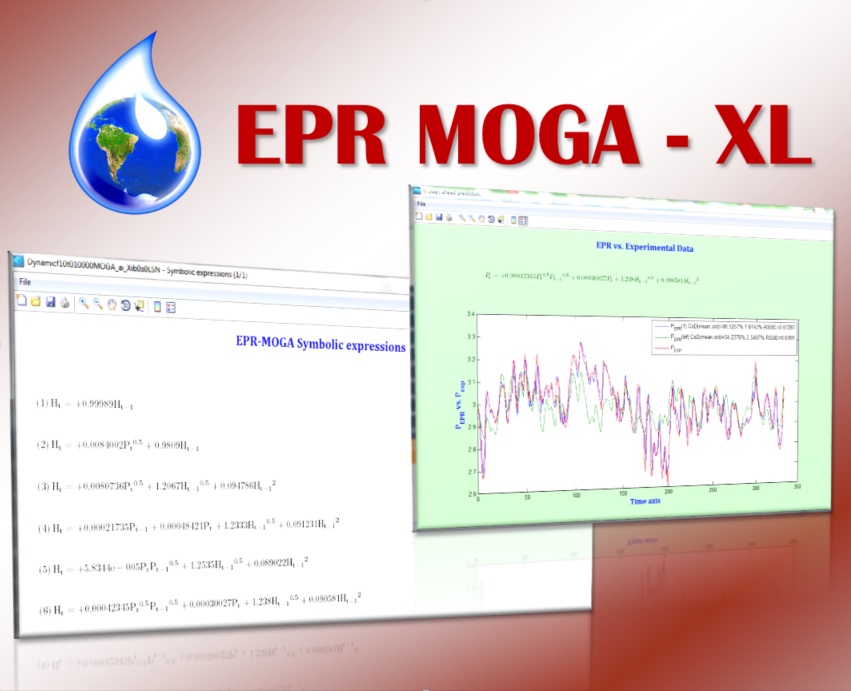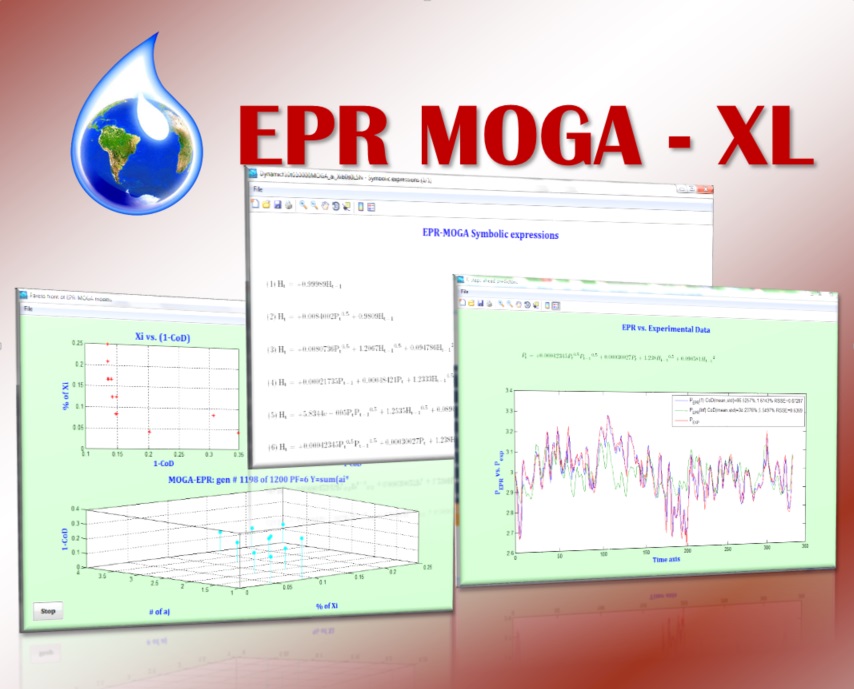The availability of large and detailed databases together with the increased computational capabilities has motivated researchers to propose innovative techniques and methodologies to mine information from data. The Evolutionary Polynomial Regression (EPR) [Giustolisi and Savic (2006)] has been introduced in the hydroinformatics community as a hybrid data-driven technique, which combines the effectiveness of genetic algorithms with numerical regression for developing simple and easily interpretable mathematical model expressions. The multi-objective search paradigm has been introduced [Giustolisi and Savic (2009)] for developing multiple models by simultaneously optimizing fitness to training data and parsimony of resulting mathematical expressions. Such improvement allows for a sudden understanding of existing patterns in data
(if any) by comparing different optimal models and the selection of the model which best fit the purpose of the analysis. In recent years EPR was used to investigate and pipe failures in water distribution and wastewater networks, rainfall-groundwater dynamics, scour depths downstream grade-control structures, explicit formulations of Colebrook-White friction factor, and evapotranspiration process. It was also adopted for other applications in the areas of geotechnical and structural engineering.



EPR MOGA-XL vr.1 integrates some advancement in artificial intelligence and data-driven modelling areas like an efficient multi-objective genetic algorithm (OPTIMOGA) and the algorithm for developing nonlinear mathematical structures using an integer coding. EPR MOGA-XL is a MS-Excel add-in and the user can launch EPR runs as a function in MS-Excel. Input data can be manually selected from any spreadsheets, without the hindrances of previous versions which required a strict data preparation. A sheet containing all EPR modelling options can be easily modified and retrieved for next analyses. Moreover, the user is guided through proper option setting by some tips, which recall the meaning of each parameter. In order to facilitate multiple analyses, the expression(s) of model(s) obtained, the values model predictions and fitness indicators of each model are stored in a separate Excel file. This allows the user to perform multiple analyses while preserving complete information on both input data and modelling settings.
To get installation packages contact as Idea-rt contact
.png)